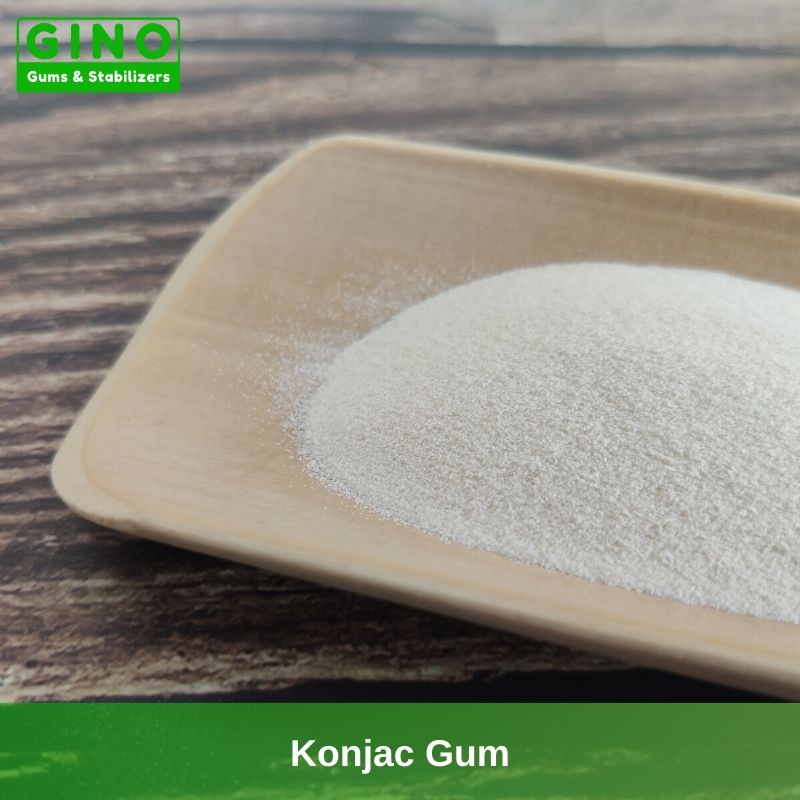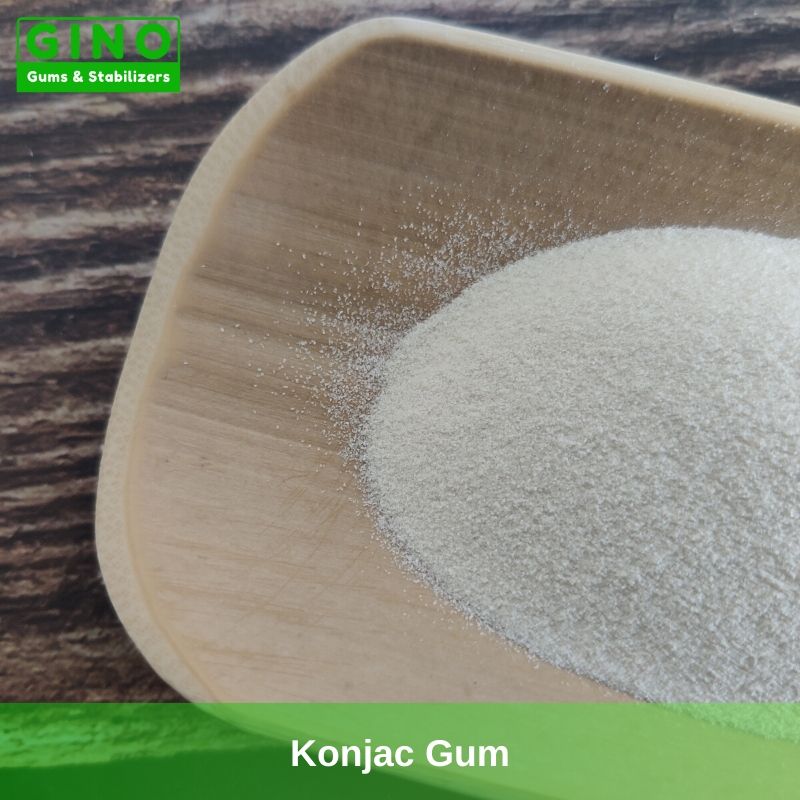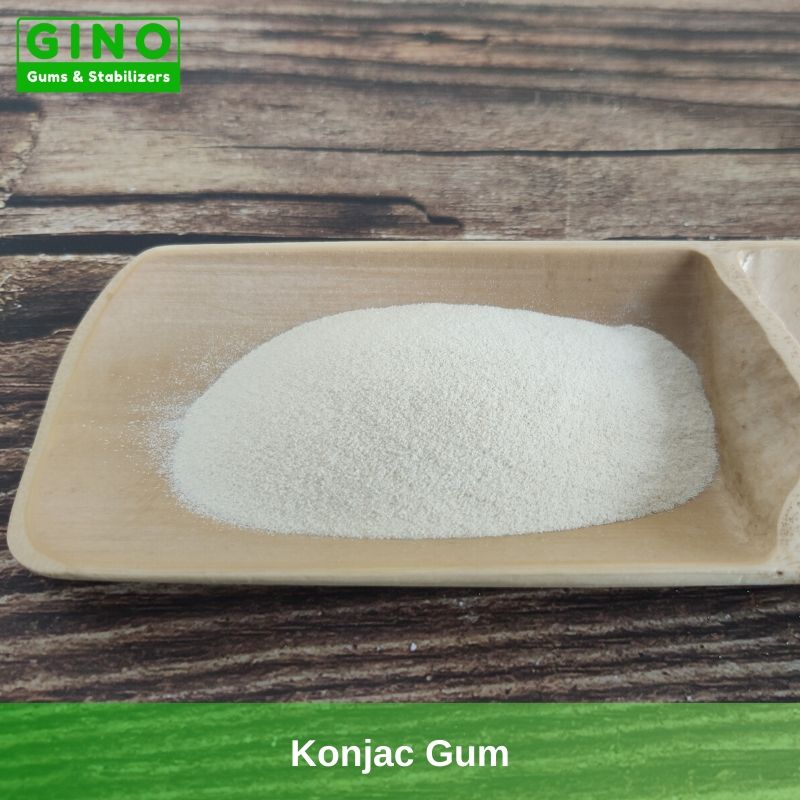Guma Konjac
E425 Konjac Gum Dostawca | Twój lepszy dostawca Konjac w Chinach
The Chinese have been using Konjac Gum as food for over 2000 years and the FDA has permitted it as a food additive.
As the professional konjac gum supplier, exporter in China, Gino is dedicated to supplying superior konjac gum products from reliable konjac powder manufacturers. Meanwhile, we can offer tailor-made solutions perfectly matched to your needs.
W przypadku jakichkolwiek pytań prosimy o przesłanie wiadomości e-mail na adres [email protected].




Guma Konjac
| Kategoria | Zagęszczacze, stabilizatory |
|---|---|
| Numer E | E425/E425i |
| Nr CAS. | 37220-17-0 |
| Kodeks H.S. | 1302399090 |
| Pochodzenie | Chiny |
| MOQ | 500 KG |
| Opakowanie | Kartony, torby |
| Termin płatności | T/T, L/C |
GINO_E425i Konjac Supplier | E425ii Konjac Gum Supplier
What is Konjac?
Konjac, also known as glucomannan, is an herb that grows in parts of Asia. It is known for its starchy stalks, the tuberous part of which grows underground. The stalks are used to make a rich source of soluble dietary fiber.
What is Konjac Flour?
Konjac flour is the generic name for konjac powder, which is made by grinding dried konjac. According to the purity of glucomannan, it can be divided into
- ordinary konjac flour,
- konjac gum,
- konjac glucomannan
three kinds.
The color of konjac flour is an important item to determine the quality of konjac flour. The whiter the color, the higher the glucomannan content.
What is Konjac Gum?
Konjac gum, also known as purified konjac powder, is a water-soluble hydrocolloid that is extracted with water from konjac powder. Konjac powder is the unpurified raw material from the roots of the perennial plant Amorphophallus konjac.
What is Konjac Glucomannan(KGM)?
Glucomannan is produced by washing konjac with watery ethanol because it readily absorbs water and is insoluble in ethanol. Glucomannan is a water-soluble polysaccharide that is considered a dietary fiber. It is a hemicellulose component in the cell walls of some plant species. Glucomannan is a food additive used as an emulsifier and thickener. From Wiki.
The main difference between konjac gum and konjac glucomannan is the purity of the glucomannan in them (glucomannan is dietary fiber and is the main functional ingredient in konjac flour).
This content needs to be ≥75% in konjac gum and 95% or more in konjac glucomannan.
Our Konjac Gum Portfolio
All-in-one Konjac Gum Specification
| Właściwości sensoryczne: | ||||
| Jest to proszek o barwie od białej do żółtawej z kilkoma brązowymi cząsteczkami wewnątrz, o neutralnym zapachu i smaku. | ||||
| Charakterystyka chemiczna i fizyczna: | ||||
| Guma Konjac 18000 | Guma Konjac 20000 | Guma Konjac 25000 | Guma Konjac 36000 | |
| Lepkość | ≥ 18000 mPa.s | ≥ 20000 mPa.s | ≥ 25000 mPa.s | ≥ 36000 mPa.s |
| Zawartość glukomannanu | ≥80% | ≥80% | ≥80% | ≥85% |
| Przezroczystość (0.5% roztwór 550nm) | ≥80% | ≥70% | ≥70% | ≥75% |
| Rozmiar cząstek (mesh) | 90% przepustowość 120 mesh | |||
| Wilgotność | ≤10% | |||
| Popiół ogółem | ≤3.0% | |||
| pH (1%) | 5.0-7.0 | |||
| Dwutlenek siarki (SO2) | ≤0,9% | |||
| Ołów (Pb) | ≤0,8 ppm | |||
| Arsen (As) | ≤3 ppm | |||
| Charakterystyka mikrobiologiczna: | ||||
| Całkowita liczba płytek | ≤2,000 CFU/g | |||
| Drożdże i pleśnie | ≤100 CFU/g | |||
| E.Coli | Nieobecny w 5g | |||
| Salmonella | Nieobecne w 10g | |||
| Uwaga 1 | Metoda badania lepkości: roztwór 1%, 30 ℃ rozpuszczony, wiskozymetr typu NDJ-1, wrzeciono 4#, 12r/min. | |||
| Uwaga 2 | Produkty o specjalnych specyfikacjach (niska zawartość siarki, wysoka przezroczystość itp.) Mogą być produkowane zgodnie z wymaganiami klienta. | |||
Funkcje
Konjac gum is readily soluble in cold water, and the solution exhibits a high degree of pseudoplastic flow.
Jego lepkość jest bardzo stabilna w szerokim zakresie pH i temperatury, a polisacharyd jest odporny na degradację enzymatyczną.
Guma konjac wykazuje synergiczne oddziaływanie z galaktomannanami, takimi jak guma guar i mączka chleba świętojańskiego oraz guma konjac.
This resulted in enhanced viscosity of guar gum, while the thermo-reversible gels of LBG and konjac gum were soft and flexible.
Środki zagęszczające i żelujące do szerokiej gamy produktów spożywczych.
Wegański zamiennik żelatyny.
Składa się z 85-90% Glucomamman i jest używany w Azji do tworzenia mąki i galaretki o wysokiej lepkości.
Działa synergistycznie z kappa karagen i guma ksantanowa tworząc termoodwracalne, elastyczne żele.
Konjac Gum Properties
Rozpuszczalność
The large molecular weight reduces the solubility of konjac in water, but the presence of a large number of hydroxyl groups in the molecule allows it to absorb about 80-100 times its own amount.
Viscosity - Maximum Viscosity
1g of konjac dissolved in 100g of water, can produce 20,000cps ~ 40,000cps viscosity, in the same concentration of thickeners, such as carrageenan, xanthan gum, gum arabic and other viscosities.
Compared with thickeners such as guar gum, xanthan gum, locust bean gum, etc., konjac is a non-ionic polysaccharide and is less affected by salt ions (calcium, potassium or sodium ions) in viscosity and gel structure.
The high viscosity allows it to be used as a thickening agent in sauces, soups and condiments.
Synergism
With xanthan gum, starch and other thickeners have good synergistic thickening effect. Such as 1% xanthan gum and 0.02% ~ 0.03% konjac used in conjunction with, solution viscosity can be increased by 2 ~ 3 times. 4.5% modified corn starch and 0.5% konjac mixed solution viscosity is 4.5% modified corn starch 4 ~ 9 times. Therefore, the number of other thickeners can be reduced if used with konjac in food.
Gel
- Thermally irreversible gel
Konjac can form thermally irreversible gels under alkaline conditions (e.g., calcium hydroxide). The degree of gelation of water depends on the presence of acetyl groups in its molecules.
The gel is formed as a result of the removal of acetyl groups by alkali and heat. The gels are thermally stable and are acid and salt stable even after repeated heating at 100°C.
This property can be used to produce heat-free noodles (teriyaki), tofu, rice, pudding, etc. and its flavor can be encapsulated in such konjac products.
- Thermally reversible gel
When heated, konjac can form thermally reversible gels when combined with solutions of xanthan gum, gellan gum, carrageenan or other hydrocolloids. This is due to the synergistic effect of gelation.
Konjac Gum Benefits
Several studies have found that konjac gum can lower blood sugar, and some other potential health benefits, such as Lower cholesterol, Weight loss, Cancer-fighting properties, Improved regularity, Thickens liquids, Saliva substitute. More human studies are needed.
Zastosowania gumy konjac
- Zastosowania
Konjac może tworzyć termicznie nieodwracalny żel, dlatego jest powszechnie stosowany jako środek żelujący w stabilnych termicznie i termicznie odwracalnych żelujących produktach spożywczych. Takich jak: Makaron, dżemy i galaretki, makarony i gotowe posiłki.
Jest również stosowany jako zagęszczacz i stabilizator do chleba, ciast, produktów mięsnych, lodów i napojów ze względu na doskonałą lepkość.
Konjac w mięsie:
Konjac jest stosowany jako spoiwo w mięsach ze względu na swoje właściwości zagęszczające, emulgujące, zatrzymujące wodę i żelujące. Jest również często stosowany jako substytut tłuszczu, na przykład w kiełbasach i szynkach. Zwiększa retencję wody, poprawia teksturę mięsa i zmniejsza zawartość tłuszczu.
Konjac w produktach skrobiowych:
Konjac poprawia żelatynizację, właściwości reologiczne i teksturalne skrobi poprzez sieciowanie, aglutynację i inne reakcje ze skrobią. Właściwości te są ściśle związane z teksturą, smakiem i jakością żywności. Mieszanka skrobi i konjac ma lepszy efekt zagęszczający i stabilność. Ponadto żel utworzony przez mieszaninę ma niską twardość i elastyczność.
Dodatek konjac do ryżu instant poprawia teksturę i zbliża smak do świeżego ryżu.
Dzięki właściwościom zagęszczającym i zatrzymującym wodę, guma konjac jest szeroko stosowana w przemyśle spożywczym.
Konjac można znaleźć w produktach mącznych, mięsnych, mlecznych i napojach.
W produkty mięsneKonjac jest stosowany w celu zapobiegania utracie wody i wydłużenia okresu przydatności do spożycia.
W galaretki, konjac może być użyty, aby galaretki były bardziej żujące i elastyczne.
W cukierki do żuciaKonjac jest stosowany w celu zapobiegania krystalizacji i zmiękczania produktów.
- Powiązane produkty
- Formularz kontaktowy
We focus our main attention on various kinds of high quality Hydrocolloids and Stabilizing systems. We're your reliable konjac supplier!
Wypełnij poniższe pola, aby uzyskać najnowszą cenę.




